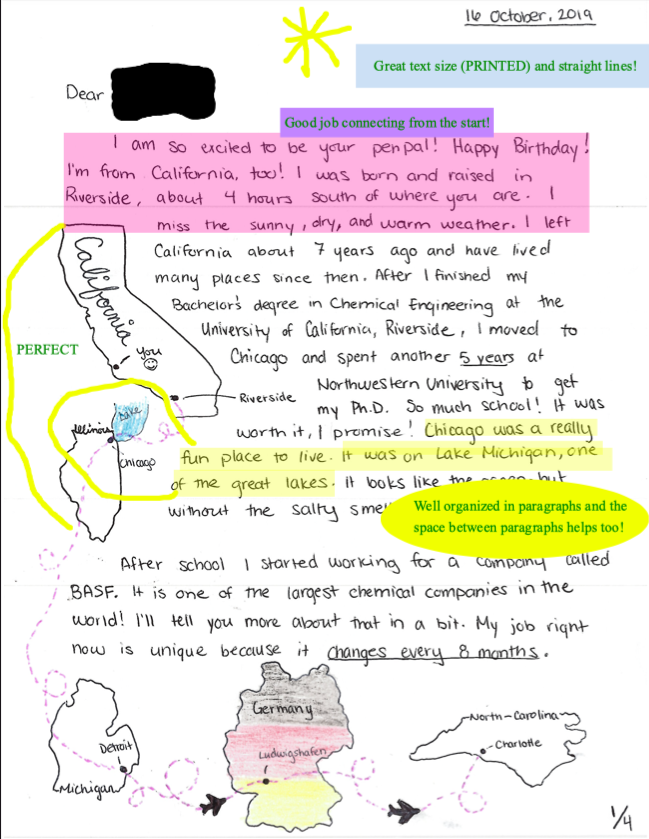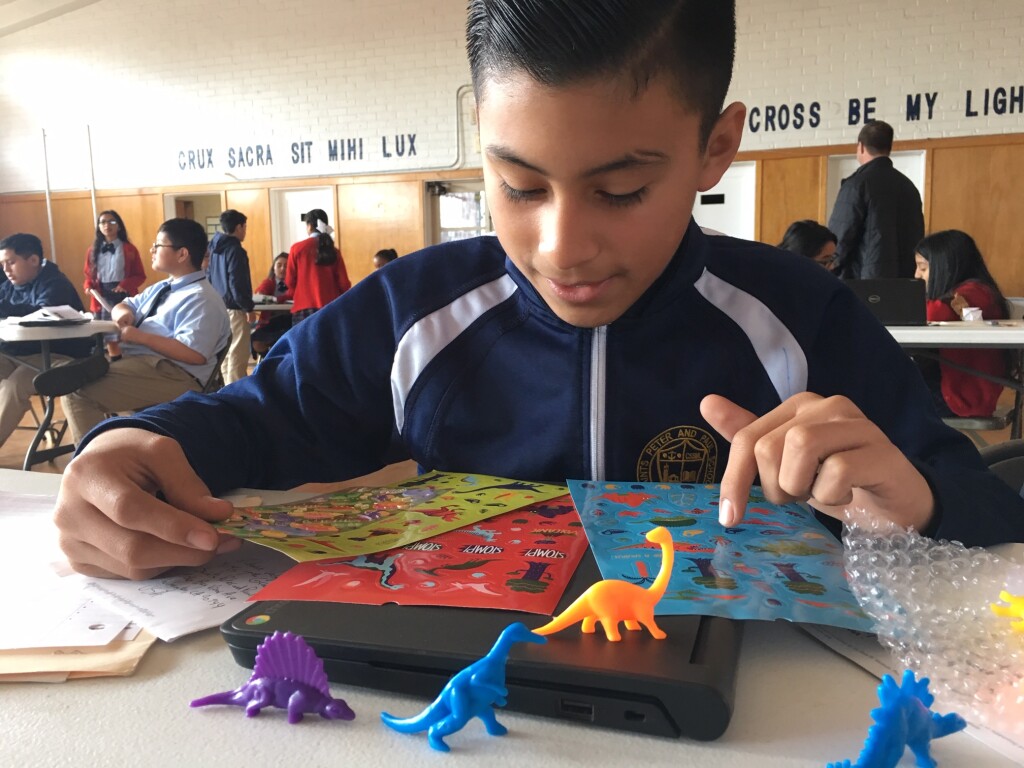Example Letters
These examples reflect the wide range of formats, reading/writing levels, topics, and interest topics and levels in science. In sharing these letters, we want to give you a general sense of what you can expect from your pre-scientist. But we also hope you notice how different these letters are, despite all students being in middle school with approximately equal time to write. Use your pre-scientist’s letter to gauge their level and try to match their level in your response.
As you browse the letters, consider how you might push those clearly interested in science to start delving deeper into their career search, and connect with and encourage those without much science content in their letter to explore STEM. Seek connections you could make with these students to help you practice for a pen pal of your own.
Additionally, check out our Awesome Letter blog series featuring real letters from STEM professionals that have been annotated by LPS Teachers.
Example Letters from Students

Example Letters From STEM Professionals
We think these letters are great because they:
- – Are written in student-friendly language.
- – Are well organized with paragraph breaks to separate different topics.
- – Are written neatly or typed in font size of at least 12.
- – Contain use science words with explanations (which is important for vocabulary building).
- – Include visuals (with captions – to explain science concepts, or show different parts of the scientists life).
- – Ask and answer questions from the pre-scientist.
- – Talk about science and non-science topics.
- – Attempt to make connections with the student based on what they know about them.
- – Are excited to write and learn about their pre-scientist.
By no means do we think these are the only great ways to write a letter to your pen pal! Please use your imagination when crafting your letter – the fact that all letters are unique is a big reason this program is special. It’s important to note that these letters are responses to letters STEM professionals received from their pre-scientists. Please attempt to adjust your content and writing level to match the writing sample you receive from your individual student. It’s best to keep most letters to a three page maximum.

Letter Enhancement Ideas
You are welcome to send additional goodies with your letter, but it is not expected or required. If you want to include anything beyond these small items (e.g., books, puzzles, or activity kits), please consider sending it to the teacher so the whole class (and more!) can enjoy. This helps to create a more equitable letter opening experience for our pre-scientists!
Furthermore, this creates a more equitable experience for STEM pen pals as well. STEM pen pals range from undergraduate students to senior scientists; some pen pals do not have the resources or access to opportunities to give gifts/swag to their pre-scientists and this may leave STEM pen pals feeling guilty. The most significant aspect of our program is the time STEM pen pals dedicate to crafting personalized, thoughtful letters to students and we wish to preserve this as our program’s main focus.

2D Items
- – Stickers
- – Pictures of you and your family, pets, workplace, experiments, travels, etc.e
- – College brochures/pamphlets
- – Postcards
- – Free swag from meetings and conferences
- – Science coloring page
- – Your own drawings/comic strips/diagrams
- – Directions for home science experiments
- – Links for websites and cool science videos and experiments
- – Current science articles related to your field/student interests
3D Items
- – Pencils/pens
- – Free swag from meetings and conferences
- – College pennants
- – Field work samples/equipment (rocks, fossils, magnifying glass, microscope slides)
- – Science coloring book
Engaging Students Who Say They Don’t Like Science
At LPS we use a no-opt out model, which means we work with all students in a teacher’s class. We believe many of the students who say they don’t like science, and would opt-out, actually just don’t yet know all that science is.
This model presents an exciting but potentially frustrating challenge for the STEM pen pals who may get a letter from a student that is short, unrelated to science, or explicitly negative about science. You can find out how excited your student is about science from the initial shared matching information, which will include the science topics your student picked, and a rating of 1-5 about how excited they are about those topics. If you get matched with a student who selected a 1, we hope you will focus on the opportunity you have to greatly broaden a student’s worldview.
Please know that students do receive your letters. Even if they’re “too cool” to respond to your questions during round one, they did read it, and they do appreciate your time. Being consistent to show your student you’re not giving up on them, and trying new topics using different formats are two great ways to hook a more hesitant student. Here are some other ideas:
- – Help your student connect their interests to science. For example, consider a student who says he hates science but loves thinking about whether aliens are real . His pen pal could help him make a connection between his interest (aliens) and a science field (the search for extraterrestrial life), which could lead to a changed perception about science as a subject after relating science to something he cares about.
- – Use pictures and/or videos to explain the science behind student’s interests. For example, a student who thinks they don’t like science, but loves doing tricks on their skateboard will enjoy images of skateboards, and just might watch a YouTube video about Newton’s laws of motion and skateboarding if you give them the link. You could suggest how understanding physics could make them a better skateboarder.
- – Don’t be discouraged if your student doesn’t really engage with the science you write about and instead picks up on other topics in your letters. Keep writing little bits about what you do and more about things that interest her or him. We understand that not every student that completes our program is going to become a scientist. Our goal is to expose students to potential STEM careers that might fit with their interests so they can decide if a science career is right for them.
- – Think outside the box. If your student expresses interest in non-STEM fields, think outside the box about STEM careers that align with those interests. There are STEM careers that align with interests in other subjects your pre-scientist may have studied in school, such as writing, art, and social studies. Think about careers in journalism, illustrating, policy, public health, and medicine as alternatives to research-based careers that may be your first inkling to discuss with your pre-scientist.
- – Talk more broadly about higher education. If your student has a clear idea about what they want to do in the future, and it isn’t STEM related, maybe you and your pre-scientist can connect about higher education more generally. Share your favorite parts, what surprised you, ask your student if they have questions about college, or whether they’ve identified any schools they’re interested in applying to.
- – Suggest activities students could do at home to explore science. All students like cool science demonstrations like a baking soda/vinegar volcano eruption! You could send a video link about this experiment along with directions for a simple project they likely already have the materials at home to create.
